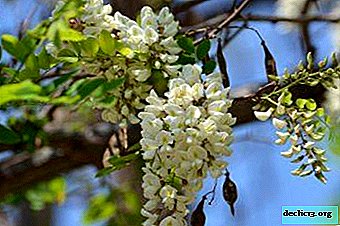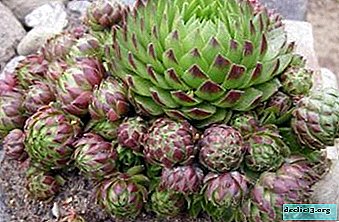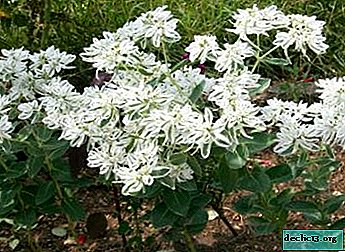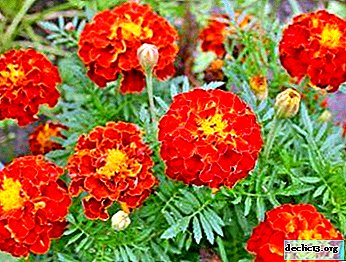Is it possible to plant a lemon so that it bears fruit at home or in the open ground and how to do it right?

Lemons are welcome guests on each window sill, but a tree grown from seed will begin to bear fruit at best in 8 years, and if a plant is planted, then the process will go 2 times faster.
It is important to vaccinate correctly, even gardeners without experience can do it; the main thing is to study in detail all the nuances of this procedure and clearly follow the recommendations.
Consider how to plant a lemon grown from seed at home so that it bears fruit, what needs to be done and how to care for the plant.
Advantages and disadvantages of this method of reproduction
 The main positive effect of the vaccination is the fruiting rate of the tree. You can use any of the known methods for vaccination, but some of them will not allow you to make a second attempt. For example, a graft that has not taken root will split the stock and will have to be re-grown.
The main positive effect of the vaccination is the fruiting rate of the tree. You can use any of the known methods for vaccination, but some of them will not allow you to make a second attempt. For example, a graft that has not taken root will split the stock and will have to be re-grown.
For some, the search for a quality stock can cause certain difficulties, because not everyone has oranges and lemons growing at home. It is worth noting that home-grown lemon will be an environmentally friendly product, which you can eat without fear for your health.
When is it best to vaccinate a houseplant?
The best period for a lemon inoculation will be April - June. A day should be chosen rainy or cloudy, since increased humidity will improve the survival rate of the stock. You can create such an environment artificially indoors.
For high-quality vaccination, the active sap flow of the plant is necessary. Some gardeners plant citrus fruits throughout the summer.What needs to be prepared?
For the operation to vaccinate the scion to the mother tree:
- sharp knife;
- secateurs;
- polyethylene;
- garden var;
- bandage or electrical tape.
Of course, you need high-quality stock and scion. Everything needs to be prepared in advance, since the grafting procedure is carried out quickly, in order to avoid infection of the plant and drying out of the tissues.
Selection and preparation of cuttings and stock
 The graft must be selected from the fruiting tree, after the cut, wrap it with a damp cloth and stored in the refrigerator, and since long-term storage will lead to damage to the stem, its darkening and decay, then you need to cut the twig immediately before the procedure.
The graft must be selected from the fruiting tree, after the cut, wrap it with a damp cloth and stored in the refrigerator, and since long-term storage will lead to damage to the stem, its darkening and decay, then you need to cut the twig immediately before the procedure.
The stock should be a strong and healthy tree, you can use a plant grown from seed. The age for the operation of such a plant is considered optimal after reaching 1-2 years. The young plant may not withstand the operation, and the old will take longer to take root.
Step-by-step instructions for the procedure at home
You can use lemon in different ways, they all have their advantages and certain disadvantages. It is important to understand the nuances of each procedure and choose the most optimal for yourself.
Copy method
This method of grafting lemon is convenient with the same diameter of the trunk of the motherboard and scion. Due to this, with growth, no growths and deformations of the trunk are formed. To complete this operation, you must:
- Choose the same thickness of the stock and scion of lemon.
- On each of them with a sharp knife the same oblique sections are made.
- With a cut, attach the handle to the stock and tightly wrap it with polyethylene, eliminating any lag of the parts from each other and a good coupling.
Slices with such a vaccination should clearly fall on each other. If the twig is not firmly fixed, then parts of the plant will not grow together. The bandage is removed only when the buds begin to come to life on the handle, which means that the vaccine was a success.
Budding method
Vaccination with an eye or budding is a fairly simple method, but requires a firm hand and precise incisions on the bark of the mother tree. If the vaccine is given in spring or early summer, then an awakened kidney is suitable, but it is better to carry out the operation in August with a sleeping one. To perform budding, you will need:
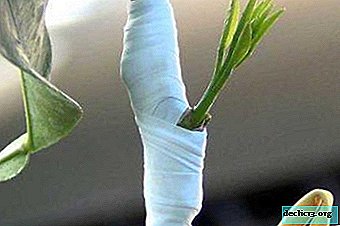 A peephole is cut off on a scion with a small supply of fabric up and down, with a total length of up to 3 cm. A part of the wood must be cut together with the kidney, the so-called “shield”.
A peephole is cut off on a scion with a small supply of fabric up and down, with a total length of up to 3 cm. A part of the wood must be cut together with the kidney, the so-called “shield”.- It is better to choose a place on the motherboard lower, to the first bud on the plant, make a T-shaped incision of the cortex with a sharp tool. The length of the incision should be no more than 3 cm, and the horizontal incision should be no more than 1 cm. The incisions should cut only the bark without damaging the trunk of the lemon.
- The cut eye is inserted into the resulting incision on the trunk of a lemon (rootstock), while the bark is neatly pushed to the sides. The tight pressing of the eye will help touch the cambial layers of plants.
- After this, the vaccine is wrapped in a strong bandage. You can use a bandage, electrical tape, polyethylene. It is better to apply insulating tape to the outside with a sticky layer, so that the bark of the tree is not damaged. The kidney remains outside, the dressing is applied to the sides of it.
- After the dressing, the kidney should be treated with garden var.
If the budding is successful, then after a month you can remove the bandage. The upper part of the stock is cut, processed by garden varieties, for the possibility of the development of a new kidney.
How to vaccinate a split?
The method of such vaccination is quite simple, but failure will result in the fact that the motherboard will not grow. In order to vaccinate a lemon in a split, you need to do:
- The stock is trimmed, it remains about 10 cm from the ground.
- With a sharp knife, a vertical section of the trunk is made to a depth of 3 cm.
- The shank should have up to 5 healthy kidneys, the bottom of the branch is cut like a wedge on both sides. The length of the slices should be no more than 3 cm.
- A twig is inserted into a cut in a tree. If the scion is smaller or larger in diameter than the stock, it is necessary to align the joint along one edge. When the motherboard is large enough and the trunk allows, then you can plant two cuttings at once.
- Everything is wound tightly with polyethylene, and on top it is covered with garden var or plasticine.
This method is considered quite easy and is suitable even for inexperienced gardeners.
Cutting for bark
 Vaccination for the bark can be performed only if the mother tree is much thicker than the scion. The operation is performed as follows:
Vaccination for the bark can be performed only if the mother tree is much thicker than the scion. The operation is performed as follows:
- The stock is shortened to its full length, leaving only 7 cm from the ground.
- A vertical incision is made with a sharp knife 3 cm from one side.
- An oblique incision of the same length is made on the handle.
- The bark of the tree bends and the cuttings are inserted with a cut to the tree under the bark. If the tree is thick enough, then several grafts are planted at once in this way.
- The vaccination site is wrapped in a strong dressing and lubricated with garden var.
Below the vaccine, you can wrap the tree with a damp cloth - this will improve the survival of the cuttings. Having wrapped this place in a package, you get a mini greenhouse. If shoots appear below the vaccination, then they should be removed, otherwise all work will be in vain.
Features of breeding in open ground
In the open ground, the propagation of lemon by rooting cuttings. The thermophilic plant requires warming for the winter period, it does not tolerate severe frosts and is quite demanding on soil moisture.
For outdoor cultivation, cuttings cut from a tree are placed for 12 hours in a growth stimulator, then they are planted in a moist soil-sand mixture. Covered with a film, they should be warm on a sunny windowsill.
The plant loves spraying and regular watering. After rooting, seedlings are transplanted into nutrient soil, and they will be ready for transfer to the street in 2 years.
How to care for a lemon tree at first?
 There are some features of lemon care after vaccination.:
There are some features of lemon care after vaccination.:
- mandatory airing and spraying of the plant, every 2 days: first open, hold the lemon in the air for several minutes, then spray and close again;
- the lemon should be warm, but not in the sun;
- fertilizers should be postponed for 3 months;
- it’s better to cover the plant with a large plastic container, drowning it a little in the ground, so that the effect of the bath will turn out, which will help the scion to take root better;
- after the appearance of the escape, continue all procedures;
- if a flower grows instead of a leaf, then it must be removed;
- all shoots below the vaccination must be removed;
- after a month remove the bandage, but continue to cover the plant;
- after 1.5-2 months, when the vaccine is getting stronger, you can remove the bath for a longer time, in 7 days you should completely open the lemon and leave it without shelter.
If the leaves of the plant turned yellow after opening, then it is too early, you should urgently spray the plant and cover again.
What to do if it does not take root?
Depending on the method of vaccination, the mother plant will either die, or you can try again next year. In general, the stalk does not take root in two cases:
- An improperly performed vaccination operation, disinfection conditions are not met, the motherboard was weak, for vaccination, the operation was performed slowly and the sections dried up, a poor-quality graft, improper care was selected.
- The motherboard is not able to take the scion. Such cases are quite rare. But they also happen and occupy no less than 10% of all cases according to statistics.
You can change the vaccination method next year or take another scion, so you can understand what the mistake is.
Inoculating a lemon is not a complicated procedure, but it speeds up the possibility of growing fresh and natural citrus fruits in your area. The exact implementation of all recommendations and strict adherence to the instructions will allow you to quickly get the first crop.

 A peephole is cut off on a scion with a small supply of fabric up and down, with a total length of up to 3 cm. A part of the wood must be cut together with the kidney, the so-called “shield”.
A peephole is cut off on a scion with a small supply of fabric up and down, with a total length of up to 3 cm. A part of the wood must be cut together with the kidney, the so-called “shield”.

